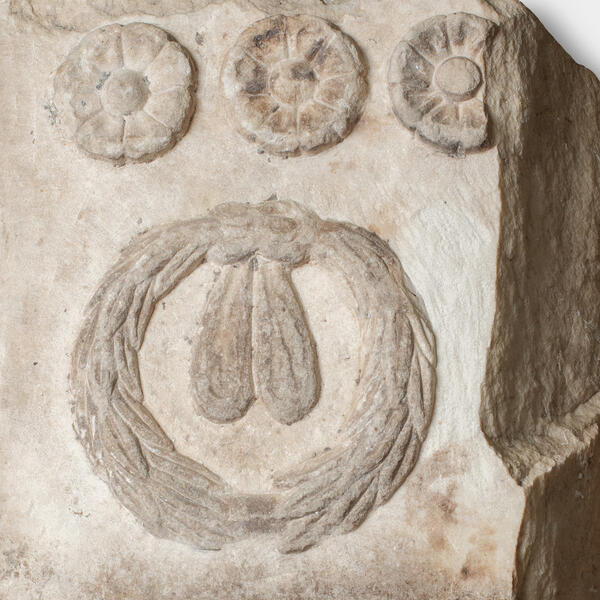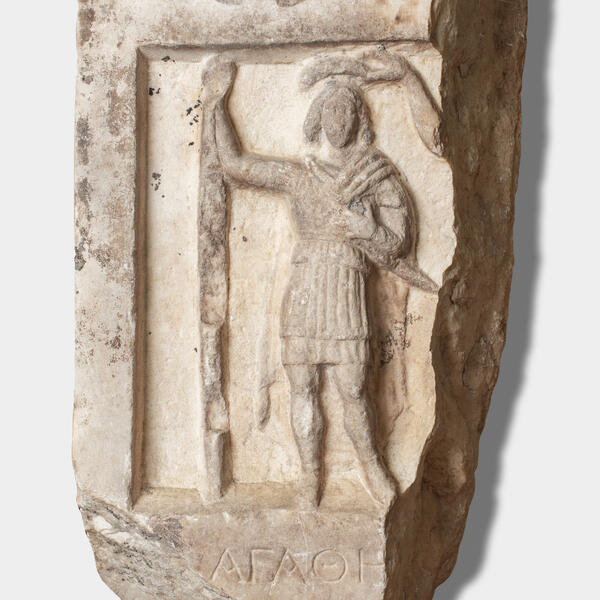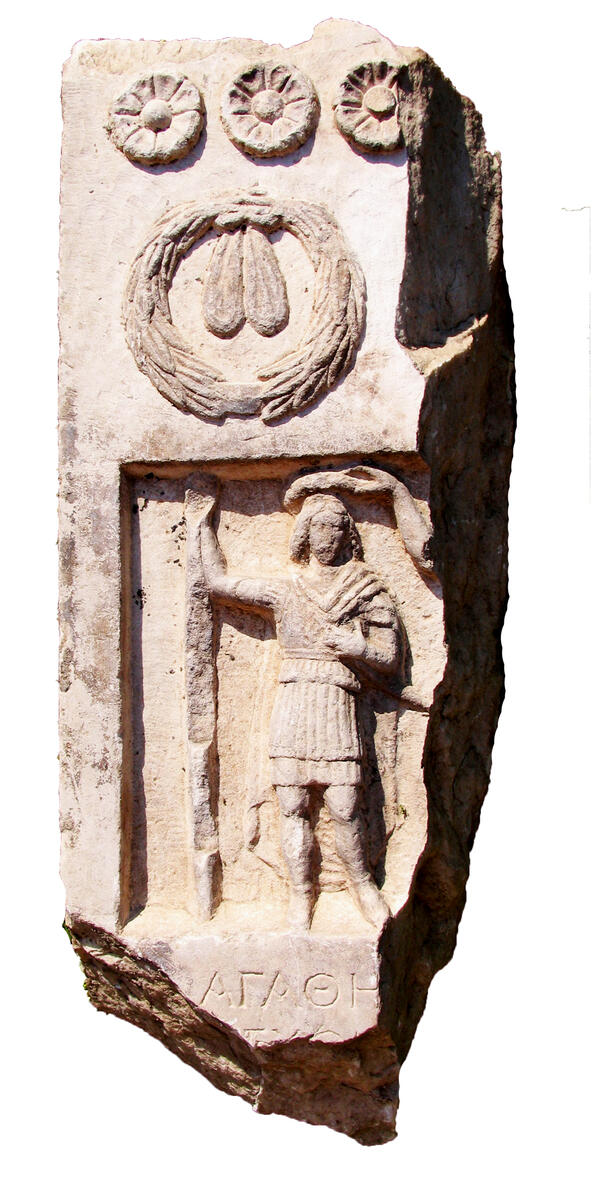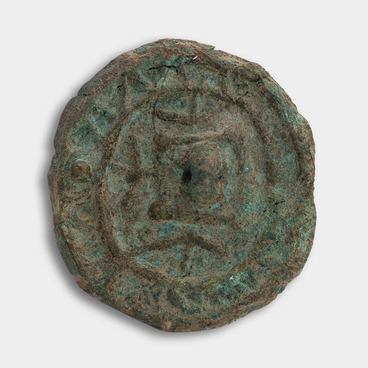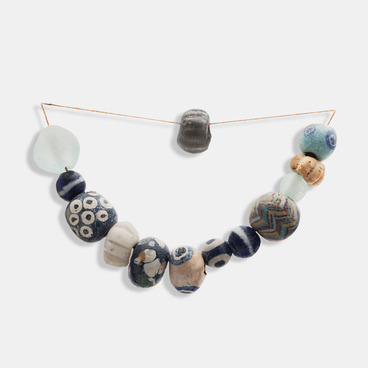The marble relief on display at the Tanais Archaeological Museum-Reserve was discovered during excavations at the Tanais agora in 1993. Marble was used as a simple building stone by the residents of the new Late Antique settlement, which arose on the ruins of an ancient city in the late 4th century CE.
The relief has not been preserved intact. Initially, it was about twice as wide. There was another figure on the right — only its right arm has been preserved. The relief was also taller, considering that there is no pediment, typical of such reliefs, and the inscription below has not survived. Above the relief, there were apparently two wreaths and still above them, five eight-petalled rosettes. The artifact features an interesting wreath above the warrior figure. It is made of elongated laurel leaves with intricate axial veins. At the top, where the leaves meet, there is a Heracles knot, with taeniae hanging inside it. In the front lower part of the wreath, there is a rectangular plate.
In a rectangular or square recess, there is a front-facing image of a standing warrior, clad in armor. Based on the position of his right wrist, he leans on a rod rather than a spear. With his left hand, he presses a short sword against his chest. His hair is long, falling to his shoulders. To the right of this figure, the stele has broken off. However, there is still the arm of another standing figure, presumably Nike, holding a wreath above the warrior’s head. In the lower part of the image, there was an inscription. Only fragments of two upper lines have been preserved which mean “Good luck on your journey! During the reign of [name of the King].” The warrior is wearing a Hellenistic coat of mail with rows of narrow vertical stripes below the lower edge. The belt misses a buckle. A cape is worn over armor, which is secured with a brooch at the right shoulder and forms a V-shaped fold across the chest. The cape is draped over the left shoulder and falls down behind the back. The edges are vertical. They are depicted on both sides of the figure and rounded only at the level of shins, while the lower edge nearly reaches the ground. The cape is decorated with wavy horizontal folds. Presumably, the Tanais stele depicts a Bosporan king or member of the royal family.

